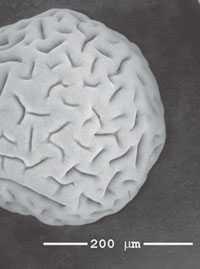A supported recyclable catalyst with excellent activity and selectivity.
A supported recyclable catalyst with excellent activity and selectivity.
Italian scientists have been supporting the reuse of their hydrogenation catalysts to great effect, in an attempt to address the main raison d’Être for heterogeneous catalysis research - developing heterogeneous systems able to match the performance of their homogeneous counterparts but with the bonus of easy catalyst recovery.
Pierluigi Barbaro, from the Istituto di Chimica dei Composti OrganoMetallici, in Florence and his colleagues have developed a supported chiral phosphine rhodium hydrogenation catalyst able to be reused several times without significant leaching. They show that the readily available cation-exchange resin DOWEX 50WX2-100 is a suitable support for hydrogenation of prochiral alkenes, and the process of anchoring the catalyst onto the support is relatively easy - simply stir the catalyst with a lithiated form of the resin.

Commenting on the work Duncan Macquarrie from the Green Chemistry group at the University of York, UK, said ’The development of cleaner routes to key chemical intermediates is one of the most important things a chemist can do. Heterogenising homogeneous catalysts has the advantage of making recovery of the catalyst simpler and cleaner. The chances of recycling the catalyst (with clear economic benefits too) are also improved. Especially in the case of expensive metals and chiral ligands which may be even costlier. However, this is not a trivial matter, and activity and selectivity can be lost on attaching the catalyst to a support. Loss of small amounts of metal to the solution can also make the strategy worthless. In this case, all of the above criteria have been met, and this is an excellent (and rare) example of a heterogeneous, stable, recyclable catalyst with excellent activity and selectivity’.
Steven Evans
References
P Barbaro et al, Dalton Trans., 2004, 1783 <MAN>b406179a</MAN>






No comments yet